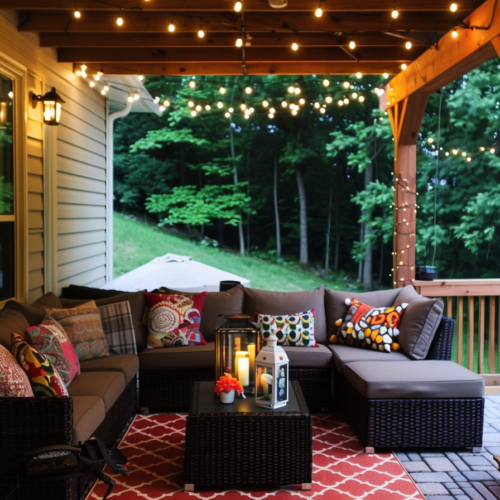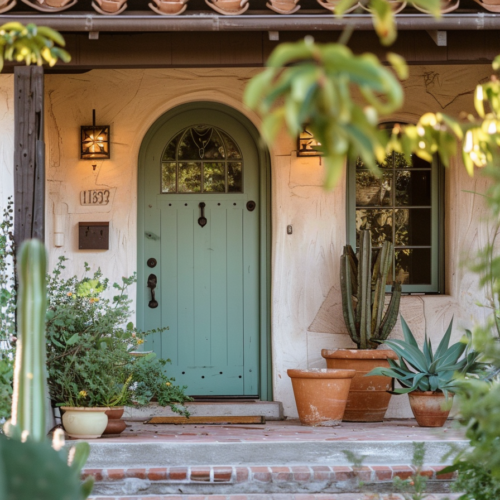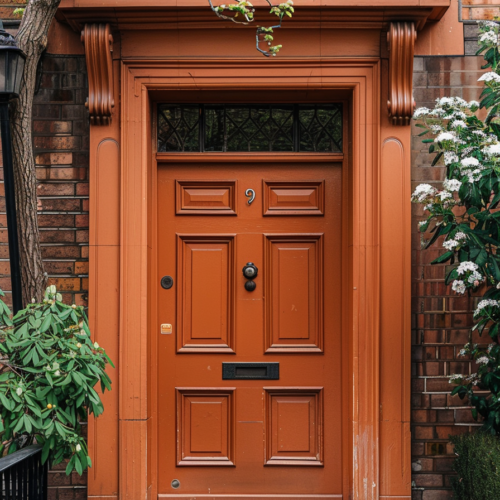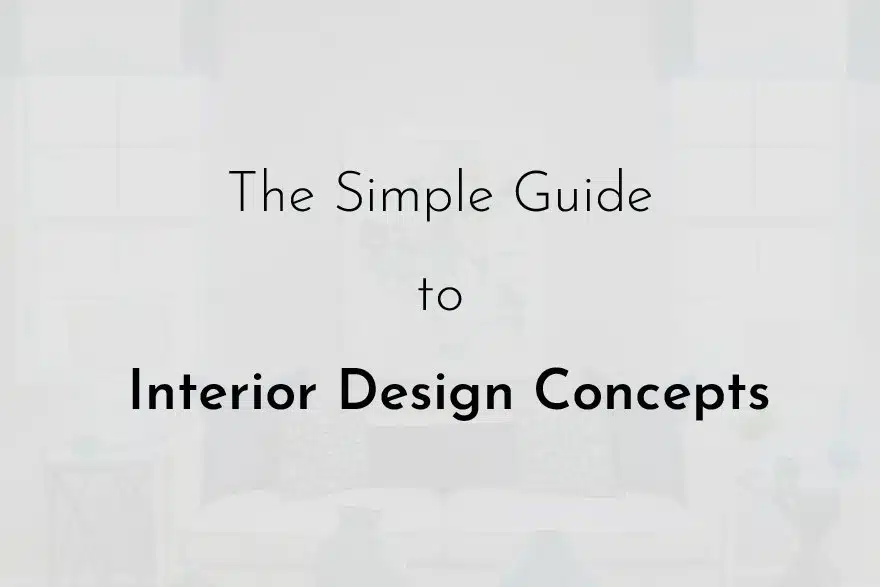
You need to understand a few essential interior design concepts if you want to create a gorgeous space.
Every interior designer should have a firm grasp of these concepts. But if you want to improve your home and make it a cozy and attractive place, you can apply these concepts too.
It sounds a little overwhelming, but there are only four key concepts you need to know. Then, you can apply them to your own house with amazing results.
Interior design is the art of creating beautiful yet practical spaces. It’s easy to get confused between interior design styles and interior design concepts.
While there are many different interior design styles, the concepts will apply to (almost) every style of architecture. From modern design to contemporary design style.
Think of the concepts as the pillars of home design – you need to have a firm foundation before adding the little details.
That’s why I put together this simple guide to interior design concepts, names, and terms. Read on, and you’ll soon understand how these concepts work together to create beautiful spaces.
5 Essential Home Interior Design Concepts
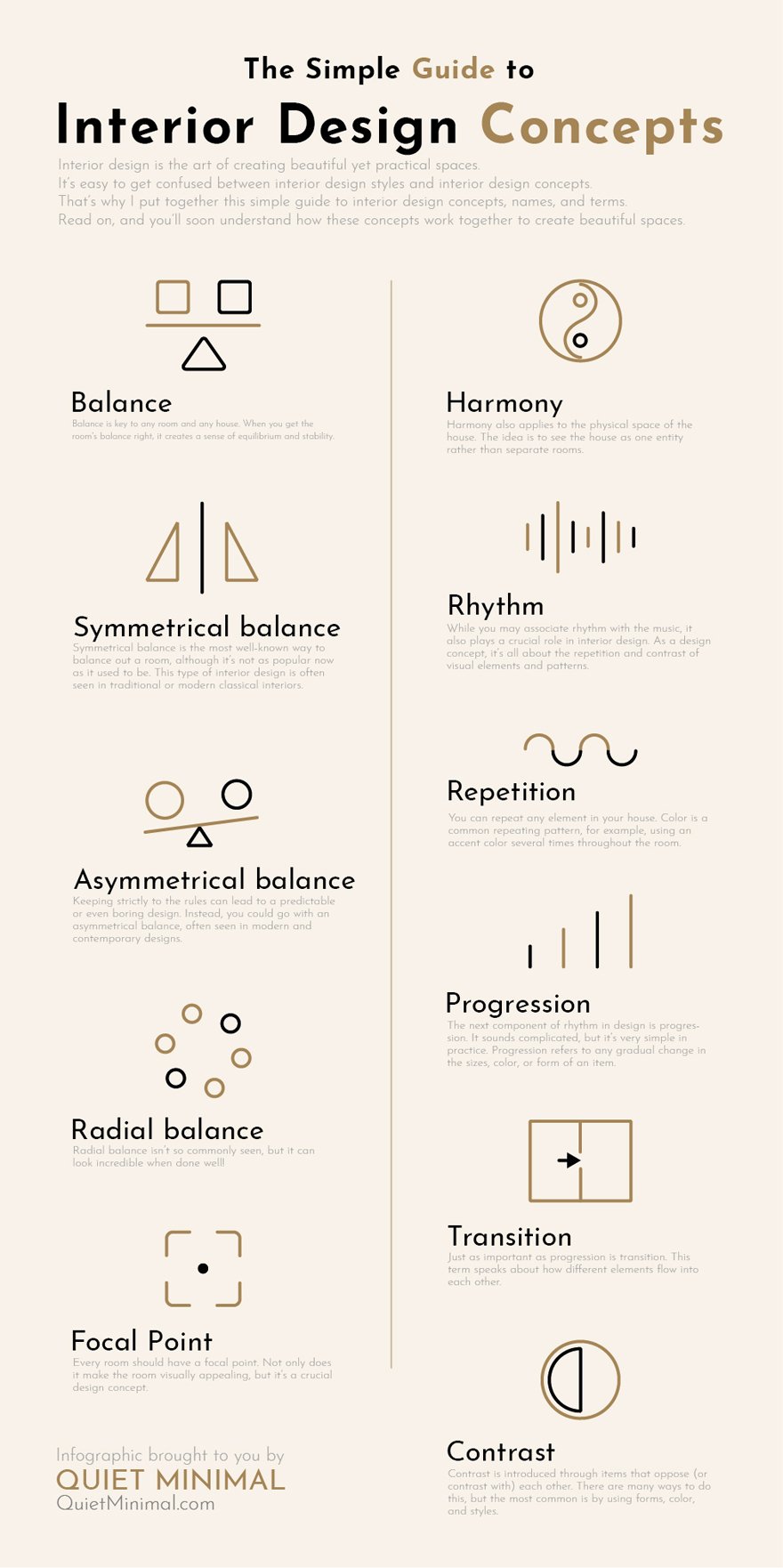
1. Balance
Balance is key to any room and any house. When you get the room’s balance right, it creates a sense of equilibrium and stability.
Practically, creating balance means managing the visual weight of the items in the room. That sounds a bit complicated, but it just means that you need to balance out the things in the room.
For example, imagine a room that has lots of big, chunky furniture in just one area. At the other end of the room, there’s lots of white space and a few smaller decorative items.
The room will feel very unbalanced. It won’t be a very functional room, nor will it look visually appealing. If you space out the larger items evenly, you’ll have a practical and attractive room.
You should also think about creating balance with all your different furniture or design elements. That includes everything from colors to themes, patterns, shapes, and textures.
There are three main ways you can create balance in a room.
Symmetrical balance
Symmetrical balance is the most well-known way to balance out a room, although it’s not as popular now as it used to be. This type of interior design is often seen in traditional or modern classical interiors.
The room is designed with perfect symmetry, so one side of the room almost identically reflects the other side. You can often see this style in new classical interior design.
Items such as chairs, tables, and paintings are spaced evenly, with very little room for personal style or creativity. As a result, symmetrical designs don’t tend to be very exciting or fresh.
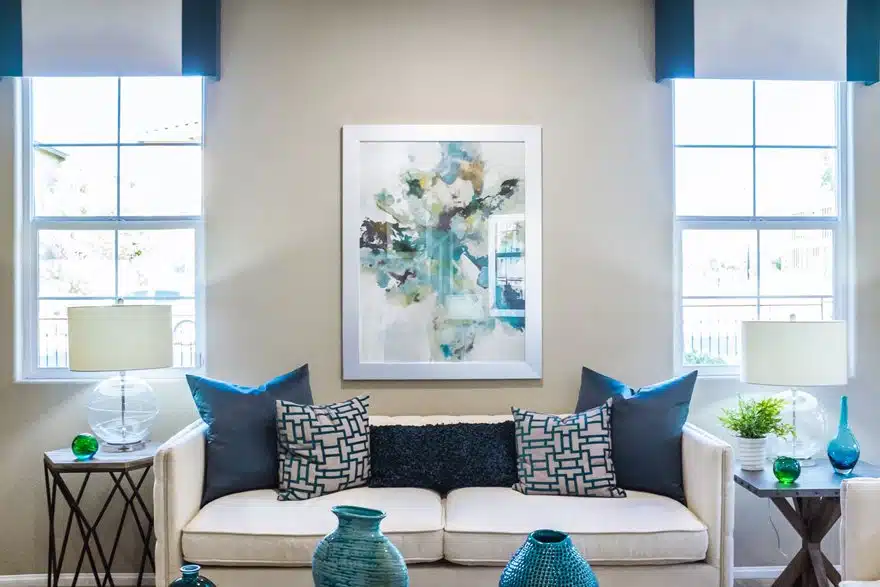
Image / NeONBRAND
Asymmetrical balance
Keeping strictly to the rules can lead to a predictable or even boring design. Instead, you could go with an asymmetrical balance, often seen in modern and contemporary designs.
Asymmetrical balance is a more complex design, as it lacks the perfect symmetry of mirror images.
It means that the visual weight isn’t replicated exactly along the axis of the room. Instead, you want to create an overall balance but with more freedom to get creative in your design or decoration.
Asymmetrical balance relies on the repetition of similar forms, colors, and shapes.
If you get it right, you can create a beautiful, well-balanced space. It also has the bonus of being more interesting and feeling more casual.
Radial balance
Radial balance isn’t so commonly seen, but it can look incredible when done well!
Rather than working along an axis, the room will have a focal point instead. From this central item, all the other objects radiate away from it. This style is a powerful and eye-catching design!
A grand example could be a statement staircase, but a circular rug or dining table can also have the same effect.
2. Focal Point
Every room should have a focal point. Not only does it make the room visually appealing, but it’s a crucial design concept. You should think about creating a focal point for each room (also known as the emphasis) in your own home.
When you enter a room, the focal point is what will grab your attention straight away. With some careful interior design, this focal point should draw your gaze.
All the other room items should enhance the focal point and allow people to gather around it.
Interesting architectural features make great focal points. It could be a massive window or a fireplace. But you can also create a focal point on a much smaller scale with a piece of furniture or artwork.
Sometimes, the object is iconic enough to be a focal point in and of itself. But you can also spice something up by painting it a contrasting color and framing it carefully.
For example, you could add flowing drapes around a large window or lighting that highlights it.
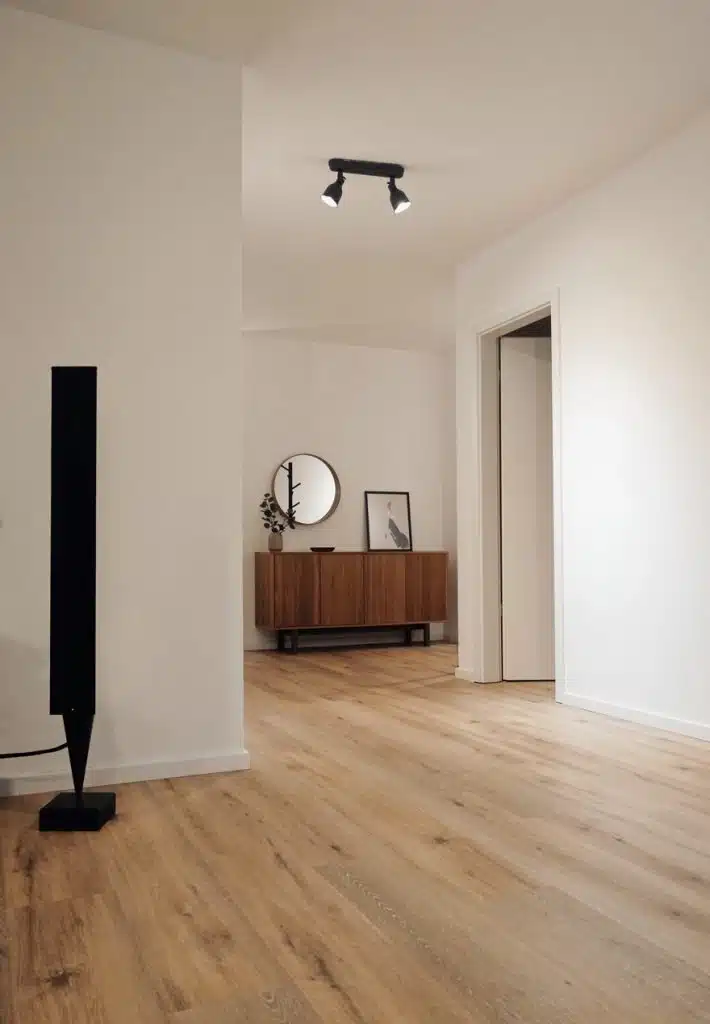
Image / Thanos Pal
3. Rhythm
While you may associate rhythm with the music, it also plays a crucial role in interior design. As a design concept, it’s all about the repetition and contrast of visual elements and patterns.
I’ll break down the four components of rhythm in interior design:
Repetition
I’ll start with repetition because it’s vital for creating a rhythm within your house. Repetition is when you use the same elements more than once in a room.
You can repeat any element in your house. Color is a common repeating pattern, for example, using an accent color several times throughout the room.
But you can also experiment with the repetition of shapes, lines, textures, patterns, and more.
Repetition creates cohesiveness and a beautiful rhythm in your home. It draws the design together for a better overall result.
Progression
The next component of rhythm in design is progression. It sounds complicated, but it’s very simple in practice. Progression refers to any gradual change in the sizes, color, or form of an item.
A useful example could be a set of tables that go from small to large. It could also be using shades of color that progressively get darker throughout the room.
It’s a simple design concept but can be very effective in creating a rhythm in any space.
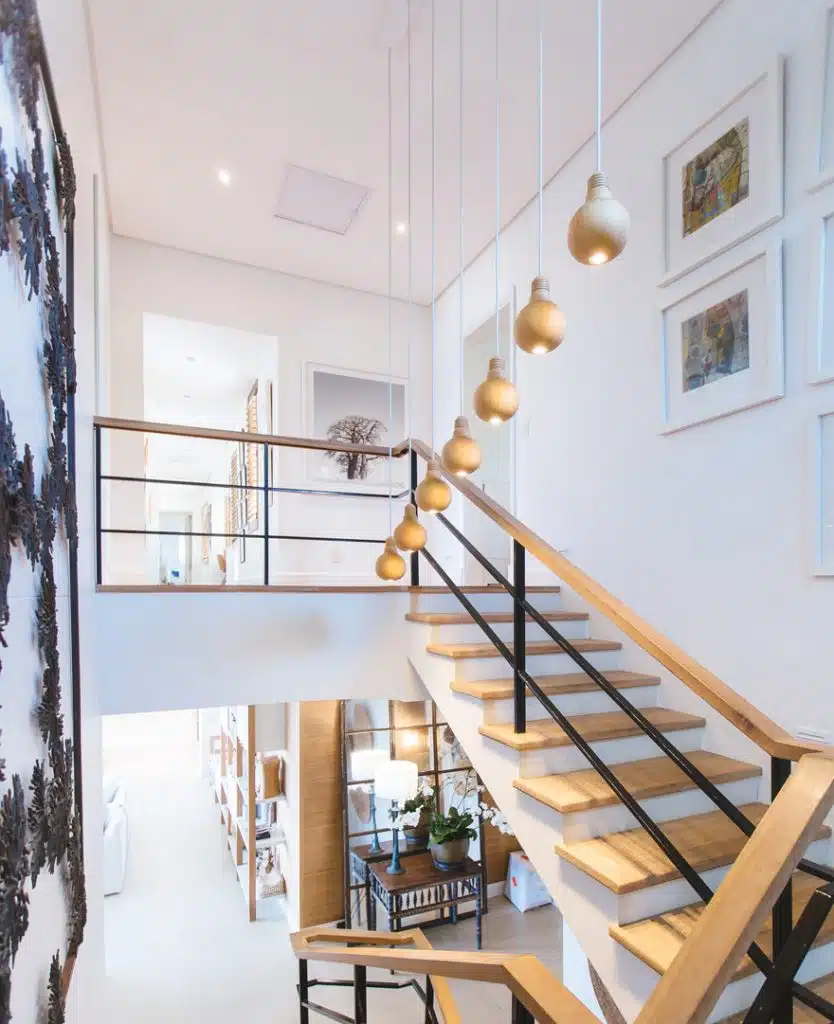
Image / Jason Briscoe
Transition
Just as important as progression is transition. This term speaks about how different elements flow into each other.
The goal is to have a smooth flow that’s gentle on the eye. You can use curved shapes and gradual transitions, rather than harsh lines.
The transition process is especially important between different rooms or areas. You don’t want to switch directly from one style to the other, as this can create a jarring effect.
Some common examples of transition in practice are curved sofas or tables or a path that winds its way through a garden.
4. Contrast
Contrast is introduced through items that oppose (or contrast with) each other. There are many ways to do this, but the most common is by using forms, color, and styles.
You’ve probably heard of the phrase, ‘opposites attract’. It’s just as true when it comes to graphic design.
You could introduce elements from modern and traditional interior design styles. Separately, they look good. But by bringing them together, you create an exciting new effect.
Other simple examples could be using black and white. Or, you could select colors that are opposites on the color wheel, like purple and yellow.
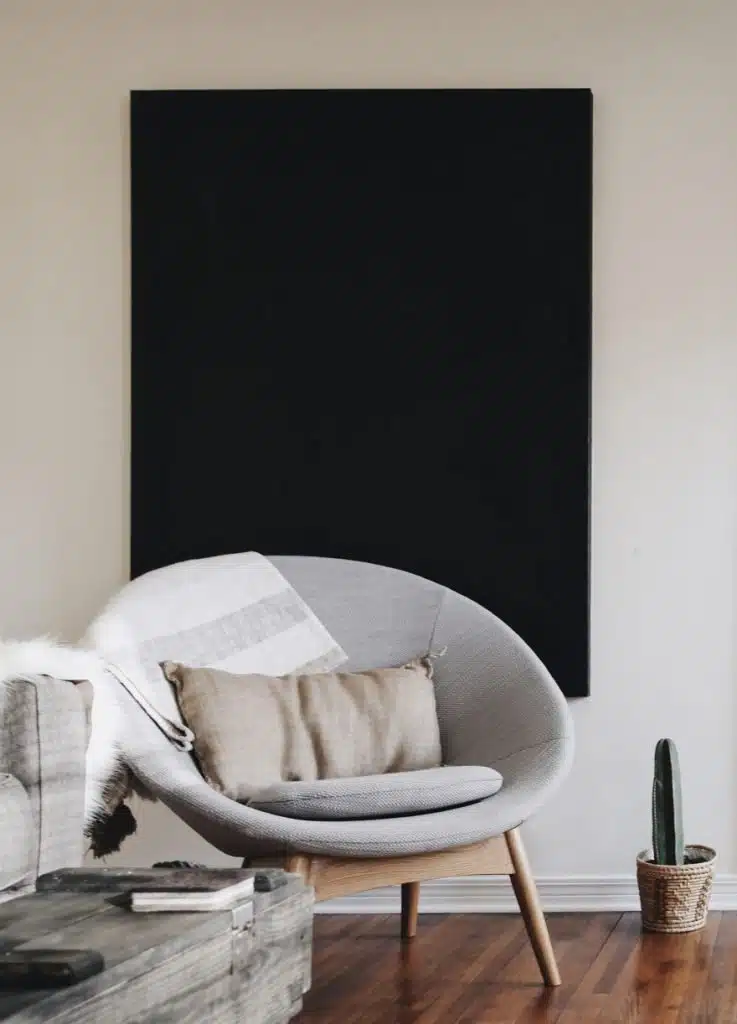
Image / avery klein
5. Harmony
Last but not least is harmony. Although all of these concepts are important, what brings it all together is the harmony of your space.
You’ll need to apply these concepts in cooperation with each other to create a peaceful, harmonious space. They should work together for the best effect.
Balance in a room is just as important as having a focal point, and you shouldn’t skip either aspect. And even if you’ve identified your focal point, you shouldn’t forget the concept of rhythm in your home.
But the harmony also applies to the physical space of the house. The idea is to see the house as one entity rather than separate rooms.
Think about creating harmony when choosing themes, colors, and the overall style. Your rooms don’t all have to look the same, but they should come together cohesively for a harmonious house.
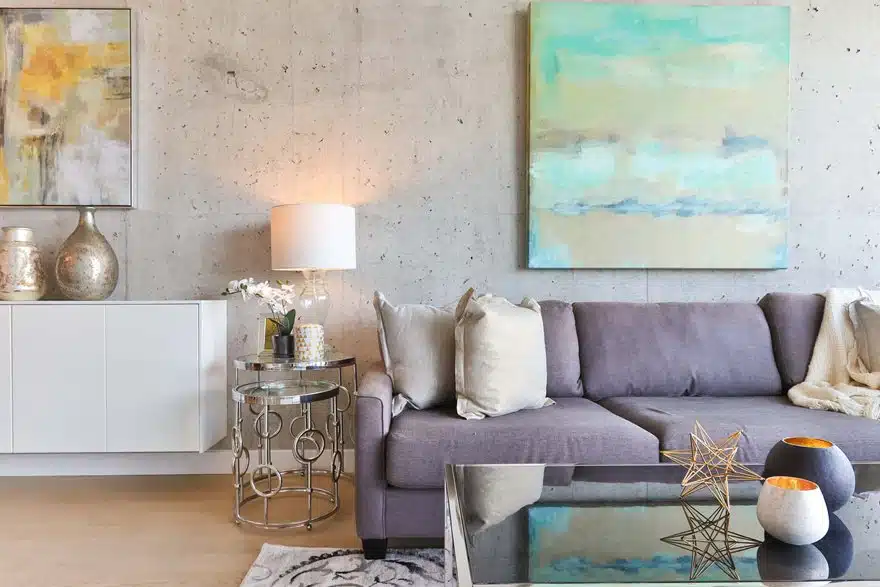
Image / Sidekix Media
Tip: save the image below to your Pinterest to re-read this article later!
Final Thoughts on Interior Design Concepts
Now, you can see how balance, harmony, rhythm, and a focal point come together in any room. With a clear understanding of how these concepts work, you can create incredible designs for any space.
I hope you enjoyed this guide to interior design concepts and found it helpful! If you did, go ahead and share it on social media!
Keep these concepts in mind when you’re redesigning a room or shuffling around the furniture. If you do, your house will feel spacious, appealing, and a great place to live.
Have you applied these interior design concepts to your home yet? Let me know if you have any questions or comments below – I’d love to hear from you.
